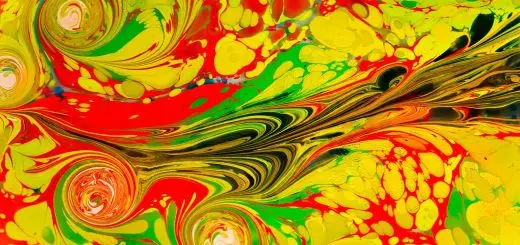Face Reading and Life Stages: Changing Features

Looking for more amazing products? Check out our online store and explore our collection here! Happy shopping!
Before diving in, please note: This post is for informational purposes only. If you’d like to know more about how we approach topics, feel free to check out our friendly Disclaimer Page.
Hey there, amazing readers! 
We’re committed to delivering quality posts, and your support (even just sticking around despite the ads) means everything to us. So, bear with us, and thanks for helping us keep the good vibes rolling. Now, on to the fun stuff!
TRANSLATE BUTTON AT THE END OF THE ARTICLE
Introduction to Face Reading
Face reading, also known as physiognomy, is an ancient practice that involves interpreting a person’s character or personality traits based on their facial features.
This practice has been used for centuries in various cultures around the world to gain insight into an individual’s temperament, behavior, and even potential life outcomes.
By examining the size, shape, and placement of facial features such as eyes, nose, mouth, and ears, face readers believe they can uncover hidden aspects of a person’s inner self.
While face reading is not a scientifically proven method, many people find it fascinating and intriguing to explore how their facial features may reflect different aspects of their lives.
Infancy: Newborn Features
In infancy, newborns’ faces are often characterized by soft, delicate features that are still developing.
Babies may have large eyes, tiny noses, and chubby cheeks that give them a sweet and innocent appearance.
Their facial expressions are limited at this stage, with smiles, frowns, and cries being the primary means of communication.
As infants grow and develop, their facial features will begin to change and take on more defined characteristics that reflect their unique personalities.
Childhood: Developing Traits
During childhood, facial features continue to evolve as children grow and mature.
At this stage, kids may begin to exhibit more pronounced expressions and emotions through their facial expressions.
Their eyes may sparkle with curiosity, their smiles may be infectious, and their frowns may indicate frustration or displeasure.
Children’s faces are like blank canvases that gradually reveal their emerging personalities and temperaments as they navigate the complexities of childhood.
Adolescence: Changing Expressions
Adolescence is a time of significant change and transformation, both physically and emotionally.
Teenagers’ faces often reflect the turmoil and uncertainty of this stage of life.
Hormonal changes can lead to acne, changes in facial structure, and shifting expressions that may range from exuberance to angst.
The eyes, often referred to as the windows to the soul, can reveal a teenager’s innermost thoughts and feelings, providing insight into their evolving sense of self.
Adulthood: Settled Characteristics
In adulthood, facial features tend to become more settled and defined.
By this stage, most individuals have established their identities and personalities, which are reflected in their facial expressions and features.
Smiles may deepen with laughter lines, frowns may become etched with worry lines, and eyes may convey a lifetime of experiences.
An adult’s face tells a story of their journey through life, with each wrinkle and line adding to the narrative of their unique existence.
Middle Age: Signs of Aging
Middle age is a time when the effects of aging become more noticeable on the face.
Fine lines, wrinkles, and sagging skin may start to appear, signaling the passage of time and the wisdom that comes with it.
Facial features may begin to lose some of their youthful elasticity, but they can also exude a sense of maturity and grace.
Middle-aged individuals often find themselves balancing the desire to maintain a youthful appearance with embracing the natural changes that come with growing older.
Senior Years: Wrinkles and Lines
As individuals enter their senior years, their faces may bear the marks of a lifetime of experiences, joys, and sorrows.
Deep wrinkles, age spots, and sagging skin are common features of older faces, reflecting the wisdom and resilience that come with age.
Despite the physical changes that occur, the eyes of seniors often remain bright and expressive, offering glimpses into the depth of their souls and the richness of their lives.
Senior faces are a testament to the passage of time and the beauty that comes with embracing one’s true self.
Cultural Influences on Facial Features
Facial features can vary significantly across different cultures, reflecting the diversity and uniqueness of human beings around the world.
In some cultures, certain facial traits may be considered auspicious or desirable, while in others, they may be viewed as less favorable.
Understand the Powerful Law of Karma and Its Impact – Explore Here!
For example, high cheekbones may be prized in one culture for their aesthetic appeal, while in another, a different facial feature may be considered more attractive.
Cultural influences play a significant role in shaping perceptions of beauty and attractiveness, impacting how individuals view themselves and others.
Gender Differences in Face Reading
Gender can also play a role in how facial features are interpreted in face reading.
Men and women may exhibit distinct facial characteristics that are associated with traditional gender norms and stereotypes.
For example, men may be perceived as more dominant or assertive based on the size and shape of their jawline, while women may be seen as more nurturing or empathetic based on the softness of their features.
Gender differences in face reading can offer insights into how societal expectations and norms shape our perceptions of masculinity and femininity.
Psychological Aspects of Facial Changes
The changes that occur in facial features over the course of a lifetime can have psychological implications for individuals.
For example, the appearance of wrinkles or lines may impact a person’s self-esteem and body image, leading to feelings of insecurity or anxiety about aging.
Conversely, embracing these changes can be empowering and liberating, allowing individuals to embrace their natural beauty and authenticity.
The psychological aspects of facial changes underscore the importance of self-acceptance and self-love in navigating the inevitable process of growing older.
Health Indicators in Facial Features
Facial features can also serve as indicators of overall health and well-being.
Changes in skin texture, color, or tone may signal underlying health conditions such as allergies, hormonal imbalances, or nutritional deficiencies.
Dark circles under the eyes, for example, may indicate fatigue or stress, while a flushed complexion could be a sign of inflammation or infection.
By paying attention to subtle changes in facial features, individuals can gain valuable insights into their physical health and make informed decisions about their wellness.
Conclusion: Face Reading as a Tool
In conclusion, face reading offers a unique perspective on how facial features evolve and change over the course of a lifetime.
From infancy to old age, our faces tell the story of our experiences, emotions, and identities, reflecting the complexities of human existence.
While face reading may not be a scientifically proven method, many people find value in exploring the psychological, cultural, and health aspects of facial features.
By understanding the significance of these changes, individuals can gain a deeper appreciation for the beauty and diversity of human faces, unlocking the secrets of our inner selves through the ever-evolving canvas of our expressions.
Face reading is not merely a tool for interpretation but a mirror that reflects the essence of who we are and the journey we have traveled.

The Enlightenment Journey is a remarkable collection of writings authored by a distinguished group of experts in the fields of spirituality, new age, and esoteric knowledge.
This anthology features a diverse assembly of well-experienced authors who bring their profound insights and credible perspectives to the forefront.
Each contributor possesses a wealth of knowledge and wisdom, making them authorities in their respective domains.
Together, they offer readers a transformative journey into the realms of spiritual growth, self-discovery, and esoteric enlightenment.
The Enlightenment Journey is a testament to the collective expertise of these luminaries, providing readers with a rich tapestry of ideas and information to illuminate their spiritual path.
Our Diverse Expertise
While our primary focus is on spirituality and esotericism, we are equally passionate about exploring a wide range of other topics and niches 

To ensure we provide the most accurate and valuable insights, we collaborate with trusted experts in their respective domains 
Our blog originally focused on spirituality and metaphysics, but we’ve since expanded to cover a wide range of niches. Don’t worry—we continue to publish a lot of articles on spirituality! Frequently visit our blog to explore our diverse content and stay tuned for more insightful reads.
Hey there, amazing reader! 
Check out our store here and take a peek at some of our featured products below! Thanks for being awesome!












